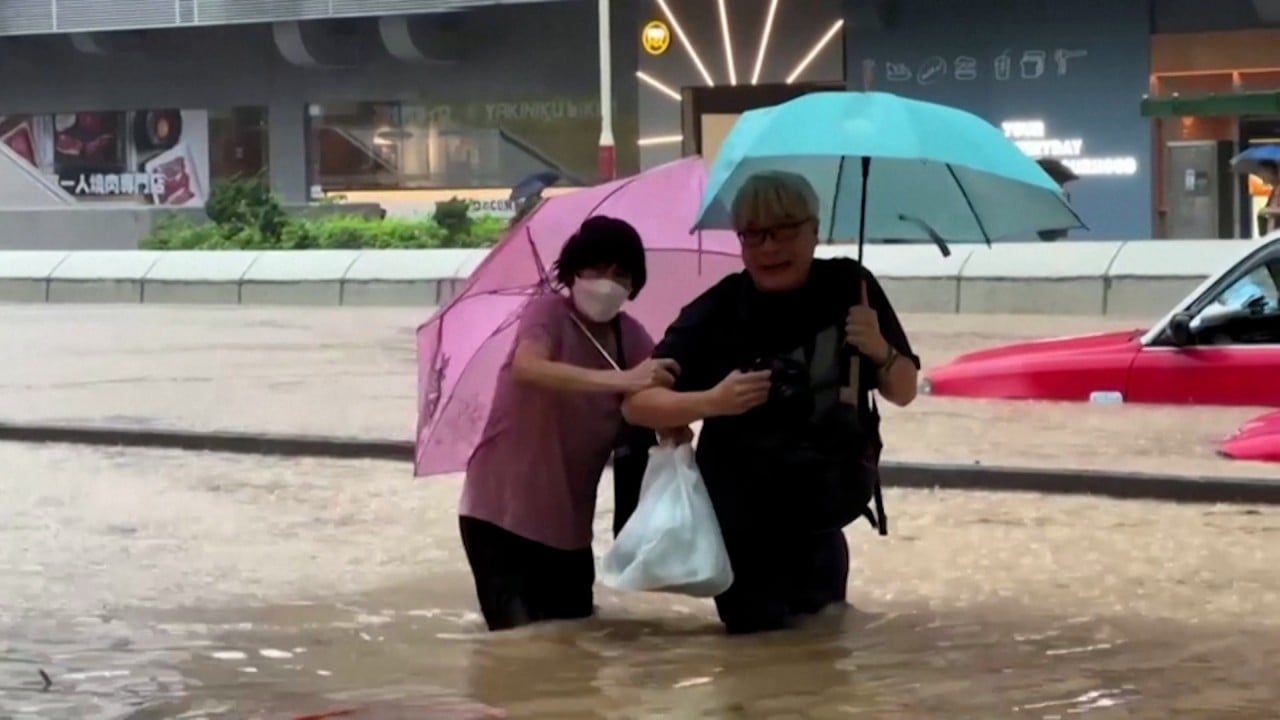Opinion | How Hong Kong’s visionary flood control failed the test of climate change

[ad_1]
In September 1983 – almost exactly 40 years ago – I flew into Hong Kong looking for an apartment ahead of opening the Financial Times’ first bureau in Hong Kong.
I had missed Typhoon Ellen by a week, but was still shocked by the chaos and damage inflicted – 10 people had been killed and over 300 injured. Most of all, I was shocked as property agents led me around storm-damaged apartments with shards of glass still littering the floor, inviting me to pay astronomical rentals far above any housing budget the Financial Times might have been willing to afford.
There was something lame about Chief Secretary Eric Chan Kwok-ki’s alibi at a media briefing on Friday: “For this heavy rain, it was once in 500 years. It was so big and so sudden and the predictability was so low.”
And if he had checked rainfall records, he would notice that levels had been climbing over the past century. According to the Observatory, the first record was set in 1886, with 88.4mm in one hour; in 1966, the new record was 108.2mm, and in 2008, 145.5mm. Last Thursday’s record of 158.1mm is unlikely to stand for long, in a trend that is surely predictable and could have been forecast by any climate activist.
Perhaps I was shocked because I naively believed we had our flooding problems well under control. Our Drainage Services Department has been a global icon for two huge flood containment projects undertaken since 2007: first, the HK$3 billion 10.7km Hong Kong West Drainage Tunnel, running from above Tin Hau in the east of Hong Kong Island to Pok Fu Lam in the west, and second, the HK$1 billion 60,000 cubic metre floodwater storage tank built deep below the Happy Valley Racecourse.
Hong Kong’s engineers were praised worldwide for their vision and ambition. In a widely circulated interview in 2020 upon completion of the Happy Valley storage tank, senior engineer Richard Leung said: “We don’t know exactly how it is changing, but we know the climate is changing, so we have to be prepared.”
The development secretary said earlier this year that the Drainage Services Department had eliminated 127 flooding black spots since 1995, with only four left. Sadly, these four still contributed to the devastation we witnessed last week.
Perhaps more people should have been listening to Edward Ng, architecture professor at Chinese University, who observed back in 2020: “The design standard is based on past history. It can cope with what happened 30 years ago, but not with what will happen in the next 50 years.”
The slow, complacent and wooden communication to thousands of alarmed and endangered Hong Kong people, reflected by the 10-strong briefing panel led by the chief secretary on Friday, stood in stark contrast to the hyperactive on-the-ground outreach of disaster management officials in other countries, in particular in the United States, where politicians are in the habit of talking directly to the community during disasters ranging from forest wildfires to floods and hurricanes.
Lee did not emerge to see the damage for himself until around 5pm on Friday. Why couldn’t he get onto the ground earlier to feel for himself the terrible disruption felt over the past week by so many Hong Kong families? As a “result-oriented” administration, this must surely be at the top of his agenda.
David Dodwell is CEO of the trade policy and international relations consultancy Strategic Access, focused on developments and challenges facing the Asia-Pacific over the past four decades
[ad_2]
Source link






